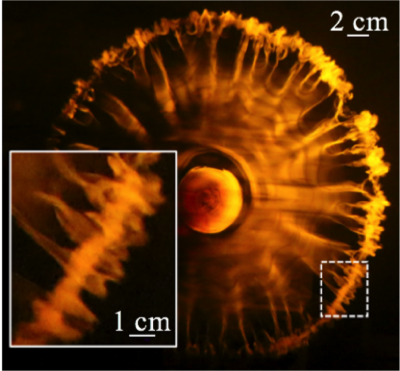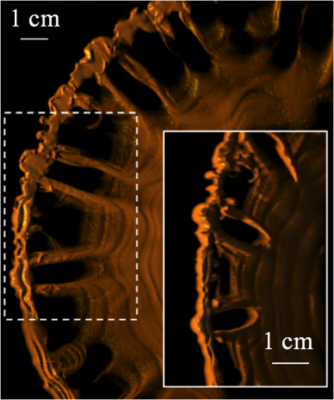Vortex rings are an intriguing marvel of fluid dynamics that are ubiquitous throughout nature. These toroidal, or donut-shaped vortices, are formed by blood flowing through the human heart, expelled as bubble rings rings by dolphin and other marine mammals for amusement, and even ejected from the craters of erupting volcanoes. These vortices consist of a circulating fluid that rotates about a closed loop; that is, the vortex lines of the circulating fluid form a ring. Vortex rings are formed by ejecting a slug of fluid through an orifice with a sharpened edge into an ambient, stationary fluid. The viscous interactions between the two fluids cause the ejected fluid to curl back upon itself axisymmetrically, forming a donut-shaped vortex that circulates around a vortex core and translates in the direction normal to the orifice.
For information: Ryan McKeown
Above Right:Vortex Ring Collision and close-up of vortex core breakdown. Below left: 3D reconstruction of vortex ring collision.The hollow band along the outer ring of the collision is the vortex core.

The head-on collision between two identical vortex rings has been previously examined macroscopically, and it has been shown that the collision produces a complex flow pattern; however, the dynamics of the collision have never been explained. When two laminar vortex rings collide head-on, they both first expand radially along the collision plane as their cores approach one another. However, when the distance between the cores becomes comparable to their size, depending on the initial Reynolds number, they either reconnect into secondary vortex rings or break down into a turbulent cloud, as shown above on the right. I am interested in examining the rapid, close-range interactions of these vortex cores, especially at higher Reynolds numbers, for they appear to showcase a cascade of energy to increasingly smaller length scales in finite time.


